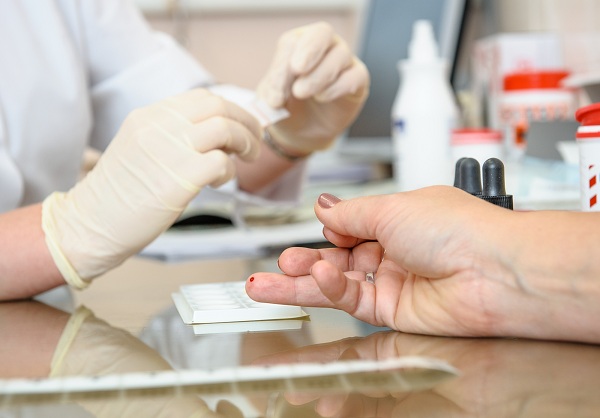The Importance of Knowing Normal Cholesterol Levels
High cholesterol levels can increase the risk of heart disease, stroke, and poor blood circulation. Knowing cholesterol levels in the blood is an effort to prevent this disease.
Cholesterol is a fat compound produced by various cells in the body, and about a quarter of the cholesterol produced in the body is produced by liver cells. Basically the body needs cholesterol to stay healthy.
However, high cholesterol levels can increase the risk of heart disease, stroke, and poor blood circulation. Checking cholesterol in the blood is useful for detecting these risks.
Cholesterol levels should be checked periodically in order to monitor overall health conditions. So, when should we start checking cholesterol levels?
If you smoke, are overweight, have high blood pressure, have diabetes and have a family with a history of heart disease, you should start testing from the age of 20.
However, if you do not smoke and do not have these diseases, the examination can begin from the age of 35 years. If the results are normal, you can check again every 5 years. But, if you have high cholesterol levels, the examination should be done more often. Moreover, if you have diabetes, heart disease and kidney disorders.
There are two types of cholesterol, namely good cholesterol and bad cholesterol. Good cholesterol (HDL-High Density Lipoprotein) functions to prevent atheroma or narrowing of blood vessels due to fat. While bad cholesterol (LDL-Low Density Lipoprotein) is one of the main causes of atheroma formation. In addition to good and bad cholesterol, there is a fat in another form in the blood called triglycerides.
Atheroma itself is a trigger for heart disease, also known as atheroclerosis or hardening of the arteries. Atheroma is a fatty plaque that has accumulated in the walls of arteries. After months, even years, the plaque thickens and expands. At that time, the blood vessels are blocked and make blood flow is not smooth. This condition can cause a heart attack, stroke or other serious problems.
Everyone's cholesterol levels are different, depending on what they consume. In addition, each person can have different cholesterol levels even though consuming the same food. In some people, high cholesterol can only be caused by hereditary factors.
Before checking cholesterol levels, you must first fast for 9-12 hours. Measurement of cholesterol levels is done by knowing how many milligrams (mg) of cholesterol are in each deciliter (dL) of blood.
The following are normal levels for the types of cholesterol that are in the blood.
Good cholesterol
The higher the level of good cholesterol or HDL, the better it will be for health. This is because HDL protects against heart disease. An HDL level of at least 60 mg / dL or more can help reduce the risk of heart disease. Conversely, HDL levels less than 40 mg / dL actually increase the risk of heart disease.Bad cholesterol
Because of its bad nature, LDL or bad cholesterol should be at a low level or can be tolerated by the body, which is less than 100 mg / dL. The amount of LDL 100-129 mg / dL can be regarded as a tolerance threshold. If you exceed the amount of bad cholesterol can cause various health problems such as atheroma, heart disease, and stroke. The amount of LDL 130-159 mg / dL can be said to enter the high threshold, and if the amount has reached 160-189 mg / dL it has entered a high level. While the amount of LDL 190 mg / dL and the rest, are at very high levels.Triglycerides
This fat can also increase the risk of heart disease. So, the lower the triglyceride level, the better it will be for health. The amount of triglycerides 150-199 mg / dL can be said to be at a high threshold, and the amount of 200 mg / dL or more including high triglyceride levels. Some people need treatment if they have triglyceride levels at both levels.Total cholesterol
Total cholesterol is a combination of the amount of good cholesterol, bad cholesterol, and triglycerides in every deciliter of blood. Usually, just looking at total cholesterol and HDL alone can describe the general condition of your cholesterol level. However, if your total cholesterol is 200 mg / dL or more, or your HDL is less than 40 mg / dL, you need to do a complete cholesterol check that includes LDL and triglycerides. Cholesterol levels less than 200 mg / dL can still be tolerated. Total cholesterol levels of 200-239 mg / dL have entered the high threshold. If the amount reaches 240 mg / dL or more, including high cholesterol levels.Necessary Food
To maintain normal cholesterol levels, avoid foods that contain trans fats. This fat can be found in fried foods, margarine and snacks such as biscuits. Here are some types of food that you can consume to reduce cholesterol levels in the blood.- Fish such as sardines, mackerel, salmon, and tuna, are rich in omega 3 which is good for the heart.
- Oatmeal, rich in soluble fiber which can reduce bad cholesterol levels. Within a day, you need at least 5-10 grams of soluble fiber. One and a half cup of cooked oatmeal contains about 6 grams of fiber. You can add fruit on oatmeal porridge to enrich the flavor.
- Nuts like almonds, pistachios, hazelnuts, and others can reduce the risk of heart disease. You can replace fatty foods like cheese and meat with beans.
- Olive oil, contains antioxidants that can reduce levels of bad cholesterol. Use two tablespoons of olive oil a day for your salad or cooking.




Komentar
Posting Komentar